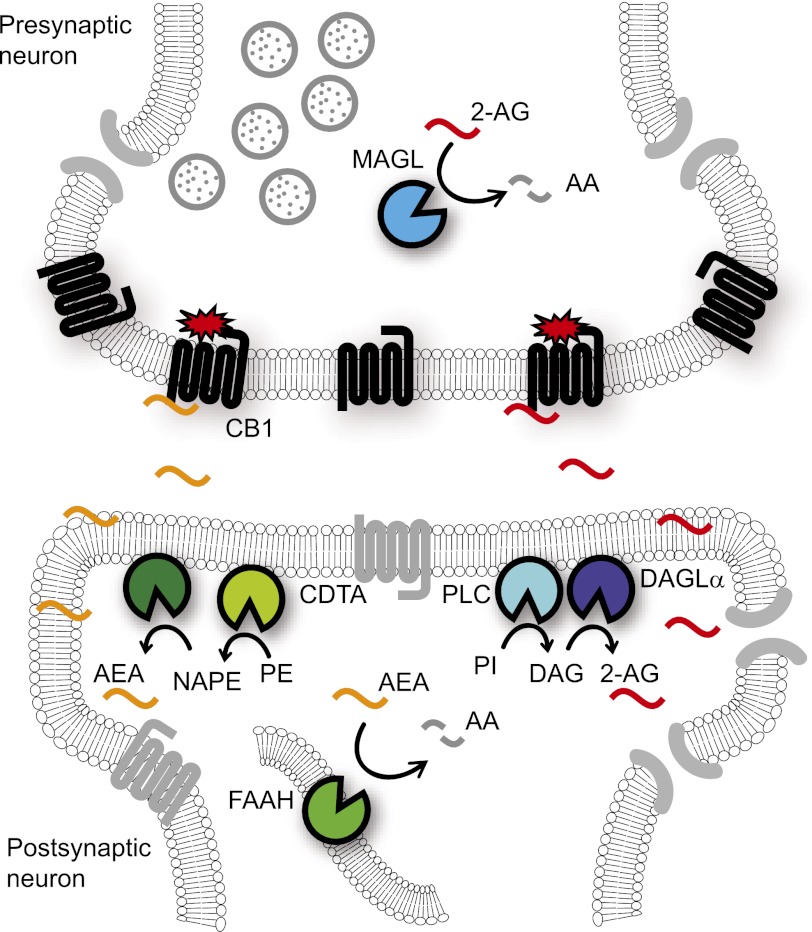Fig. 1.
Schematic of retrograde endocannabinoid signaling in the nervous system. The endocannabinoid transmitters anandamide (AEA) and 2-AG are thought to be biosynthesized postsynaptically. Anandamide is produced from NAPE precursors, which are generated by a still uncharacterized CDTA enzyme. The release of anandamide from NAPEs is also an incompletely understood reaction pathway that likely involves one or more phospholipase A and/or D enzymes. 2-AG is synthesized from phosphatidylinositol (PI) lipid precursors by the sequential action of PLC and the DAGLα and DAGLβ enzymes. DAGLα is the major 2-AG biosynthetic enzyme in the brain. Following activity-dependent biosynthesis/mobilization, endocannabinoids traverse the synaptic cleft where they activate presynaptically localized CB1 receptors. CB1 signaling through Gi/o proteins eventually results in the inhibition of neurotransmitter release. Anandamide and 2-AG signaling is terminated by enzymatic hydrolysis, which, in the CNS, proceeds primarily through FAAH and MAGL.

